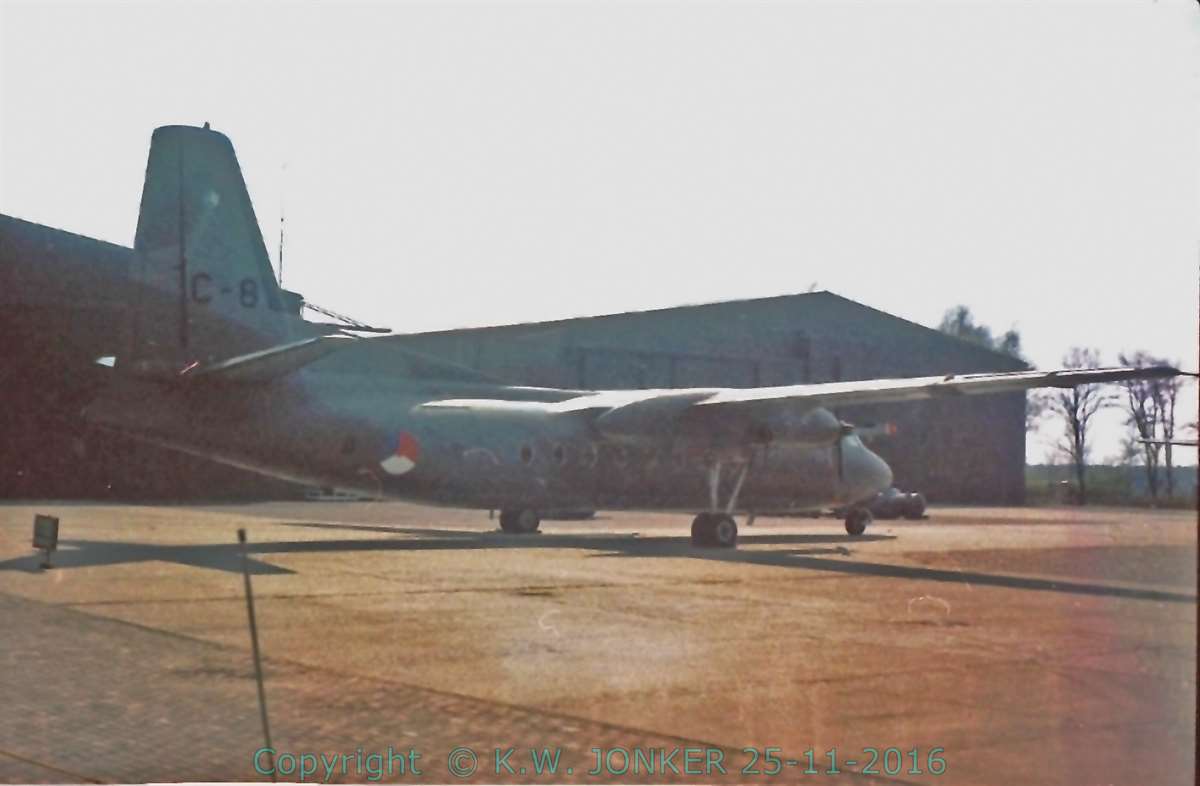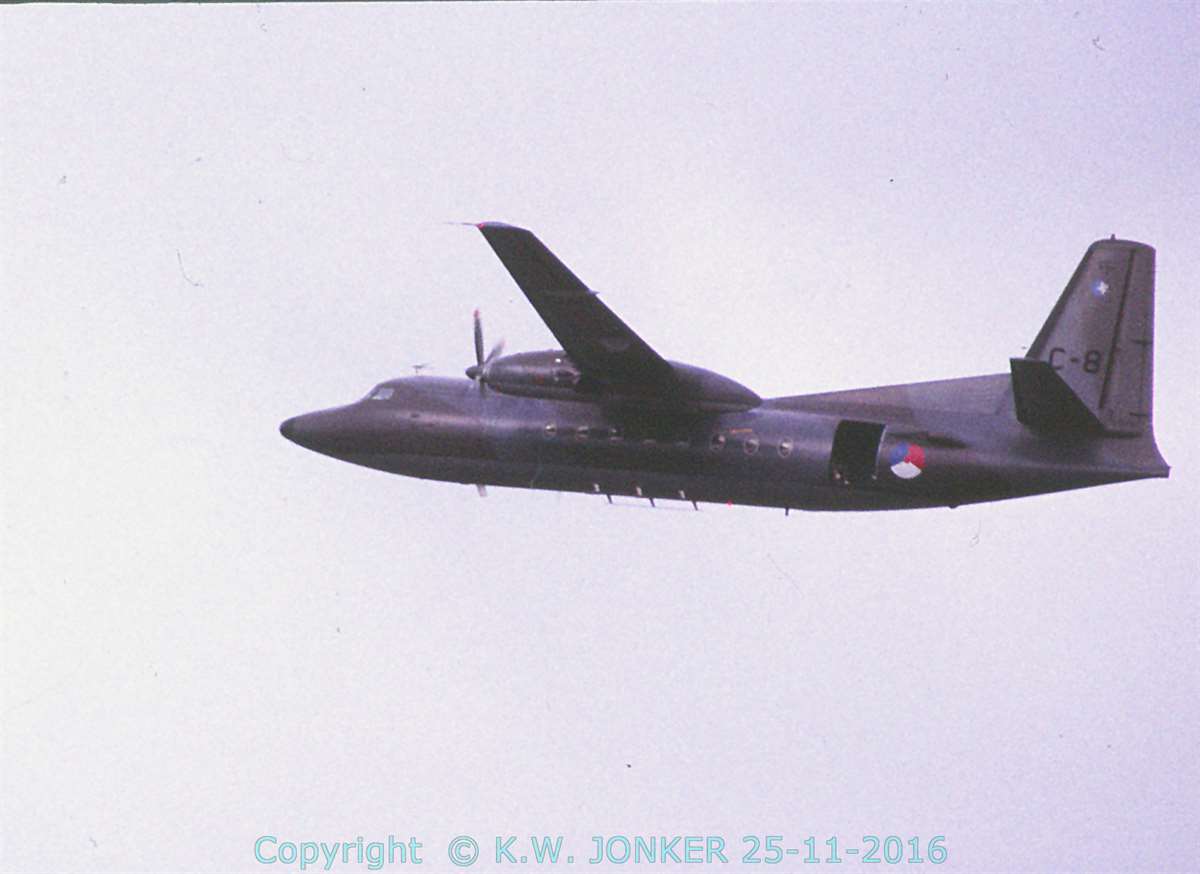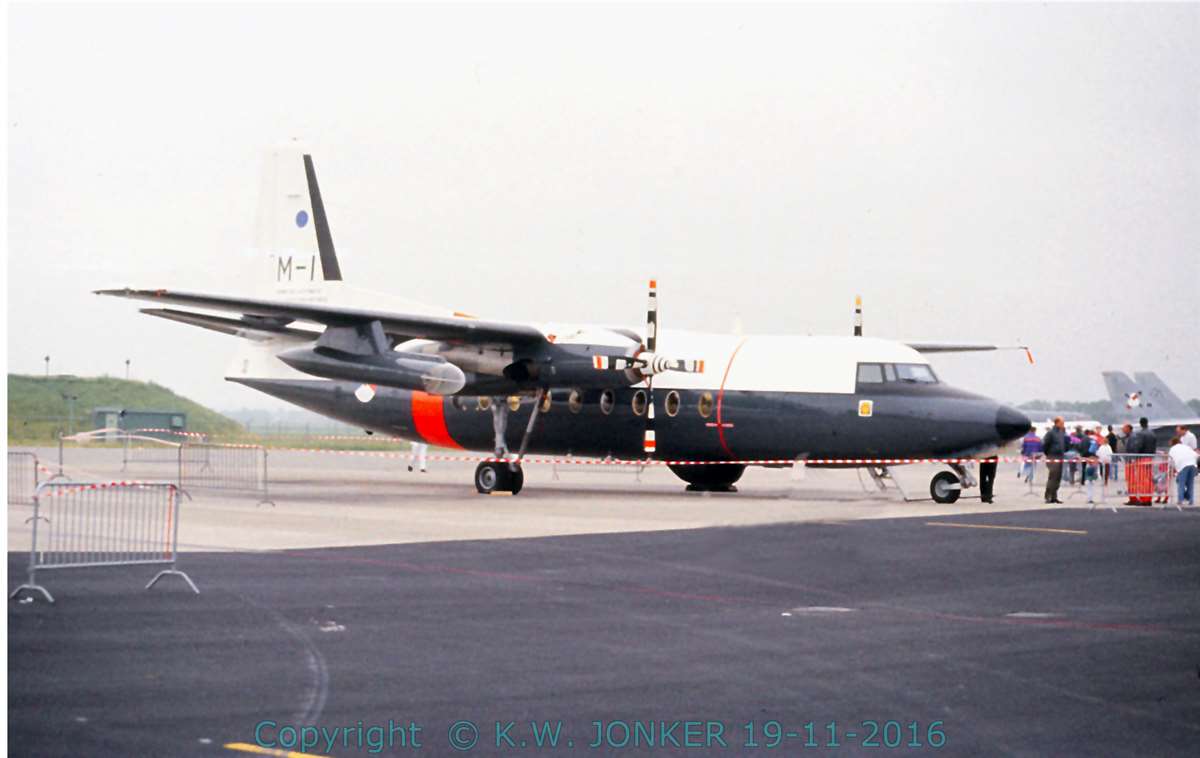Nederlandse Modelbouw en Luchtvaartsite
Dutch Modelling and Aviation
Fokker F.27
Page 2 of 6
Information about Dutch aircraft.

Fokker F.27 Mk.300M, C-8, photographed at airbase Soesterberg (scanned, old rather bad negative).

Fokker F.27 Mk 300M, C-8, with radar nose, photographed during the Open Day Dutch Air Force, September 1989 at airbase Volkel.
Fokker F.27M
During the 70s there arose operational problems with the Lockheed Neptune of the MLD. In particular, the availability of the special fuel F22 was very poor.
Because of this the detachment of the Neptune at Hato airfield was compromised.
In 1978 the Chief of the Naval Staff, Vice Admiral Veldkamp, received a commission to research the usefulness of the Fokker F.27M (Maritime).
The result of this study was that this type was well suited for the task in the Netherlands Antilles, only the lack of armament was a disadvantage.

Fokker F.27M, M-1, photographed during airshow 75yeaars RNlNAS, June 1992 at air station Valkenburg.
On June 30, 1980 it was decided to purchase two examples of this type, later a number of extra aircraft would possibly be purchased.
The F-27M had good positioning system, Liton radar and life-saving equipment such as lifeboats and also a large flight endurance of up to eleven hours (with external fuel tanks).
Furthermore, the Maritime had more powerful engines than the original version, i.e. 2320 hp each, over 720 hp more, making the take-off weight increased from 35000 to 45000 pounds.
On September 30, 1981 the first Maritime, registered M-1 was transferred to Schiphol. On November 9, 1981 the aircraft departed from Soesterberg to the West Indies and flew via the Azores, Canada, Bermuda and Puerto Rico , to the Dr. A. Plesman Airport Willemstad, where it arrived on November 13, 1981.
The M-2 departed on March 8, 1982 from Soesterberg and flew via Las Palmas, Senegal, Brazil and French Guiana. Due to a leaking fuel tank in Dakar, Senegal arrived the aircraft arrived just on March 18, 1982 at Hato.
After two weeks corrosion problems occurred. This was caused because most flight s were at low level above sea and also the aircraft were parked day and night in the open air on the platform, which was about 125 m from open sea. [the existing hangars were too small for the F-27] Furthermore, the trade wind was almost permanently present with lots of sand, high humidity and lots of salt.
All maintenance must take place in the open air and in addition, there were insufficient resources to achieve adequate control of the corrosion. After a patrol flight the pilots were usually looking for a cloud and flew through it, to to rinse the aircraft slightly.
After much discussions about the costs the two old hangars were demolished in August 1985 and shortly thereafter began the construction of a new larger hangar, which was officially opened in June 1986.
in February 1986 despite these measures both aircraft were even even temporarily held to the ground as a result of the corrosion problems.
In September 1992 the right pylon tank with the hardly used searchlight of the M-1, was removed and replaced with a new tank without searchlight.
An periodic examination showed that three out of four tanks were corroded in such a way they could be used any more.
Because the tanks were not immediately necessary, they were not replaced but completely omitted.
